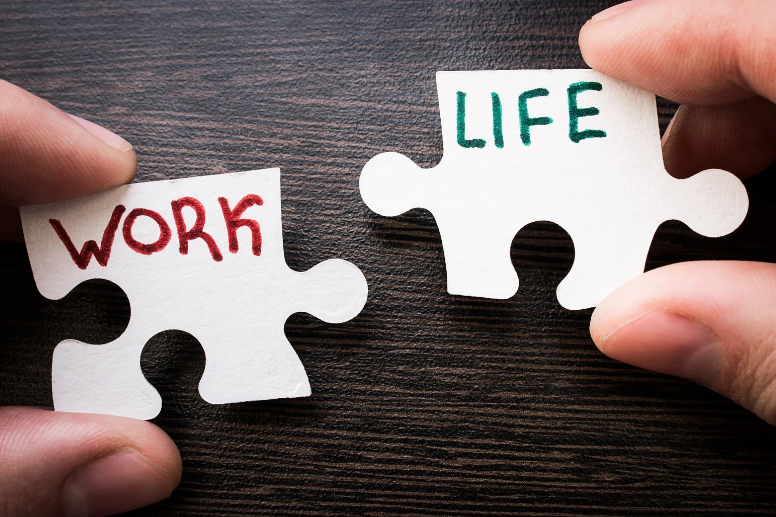There's a quote that says "Procrastination makes easy things hard, and hard things harder." This can be applied to anything you don't want to do, whether it's a growing pile of laundry, a time-consuming work report, the long overdue phone call to a chatty relative or a root canal you've been avoiding. In most cases, delaying these types of "necessary evils" only intensifies the evil.
Consider how much energy you spend resisting the tasks, activities, places and perhaps even the people you don't enjoy. Maybe you complain to co-workers about a meeting you don't want to attend. Or, if you can't stand cleaning bathrooms, you might spend more time dreading the task than actually doing it. Then there's the stack of unpaid bills you've been avoiding, the paperwork that needs filled out for your child's school…and on and on.
Active resistance extends to your health and fitness, too. You may find yourself making excuses for skipping the walk you were supposed to take, or for choosing French fries over veggies. You may even resist the current version of yourself, refusing to accept your body as it is, always longing for that skinnier, healthier version. Whatever form it takes, resistance can be a big road bump along the path toward your goals.
But this is all human nature, right? After all, everyone has aversions to certain things. As long as you get them done eventually, there's no harm in resisting them—or is there?
According to therapist Lisa Bahar, resistance might not be as harmless as you think. "When we resist, we increase suffering and emotional distress," she says. "On the other hand, acceptance decreases suffering to endurable pain, and eventually creates peace. On some level, there is a misperception that if we resist long enough, things will change—but the reality is that nothing will change until you stop resisting."
Strategies for Turning Resistance into Acceptance
You're not powerless against resistance. With a few practical strategies, you can eliminate the impulse to groan and moan—starting today.
1. Be aware of what you're resisting—and make a commitment to stop.
Start keeping a "resistance log." Whenever you catch yourself procrastinating, complaining or rationalizing about something you don't want to do—whether it's going to the gym or throwing away your candy stash—write it down.
"There is always meaning behind the poor habits we form," says Kendra Davies with Stellar Life Coaching. "The areas that we resist the most are the triggers for the work we must do in order to get the things we want."
Each time you write down a resistance, make a commitment to yourself to stop. "Once you've observed the resistance, be willing to turn your mind toward acceptance instead of rejection," says Bahar.
2. Change your self-talk.
You may not even realize it, but each time you resist something, you're talking to yourself. Learn to recognize those messages, and then replace them with positive affirmations.
"It's critical that we examine the self-talk we use to support our resistance, such as 'I'll go to the gym tomorrow, it's too hot outside to run' or 'I'll cut back my carbs on Monday,'" says psychologist Lisa Saponaro, Ph.D. "We can give ourselves counter messages that emphasize the importance of our long-term goals and help us make the right short-term decisions."
3. Be flexible.
If you find yourself actively resisting taking a run day after day, it could be that you just really hate running or that it's too hard on your body. Be open to trying different activities, from kickboxing and rollerblading to water aerobics, Pilates, CrossFit or online fitness videos. It doesn't matter what you're doing, as long as you're moving your body in a way that is comfortable.
4. Get out of autopilot.
Davies once had a client who went to Starbucks every day to get coffee and a pastry—for seven years. It wasn't just what she purchased that she had to overcome, but the habit of driving to Starbucks. As she told Davies, it was as if her car was driving there on its own.
"When you have created habits that run so deep, you simply do them without any awareness," Davies says. To break the cycle, she recommends finding small ways to change up your day. This might be something as simple as driving a different route to work or parking in a different spot—anything to break the monotony and make a rigid mindset more flexible. "This will help you get into a state of mind that allows you to see the bigger picture and identify options that you would have otherwise missed," she says.
5. Respect rituals.
On the flip side, sticking to a schedule can help keep you accountable and consistent. Certified coach Dina Filice preps her meals for the week on Sundays, always meets a friend at the gym on Mondays and Fridays, and meditates every night before bed.
"Creating rituals makes me feel good, and the consistent, healthy patterns build my internal value," Filice says. "When my value grows, I have less tolerance for things that make me feel bad, such as cheeseburgers, crappy relationships or skipping out on my own commitments.
6. Practice mindfulness.
Dr. Saponaro recommends using mindful-based activities as a powerful weapon against resistance. While resistance pushes your goals farther into the future, mindfulness helps you to focus on the present moment.
"By utilizing mindful strategies to anchor us in the here and now, we are better equipped to tackle the obstacles on the pathway to our goals," says Dr. Saponaro. "Mindfulness keeps us focused on the choices we're making in each moment and then determine if they promote our goals."
Like the idea, but not sure how to start? Some examples of practices that promote mindfulness include meditation, breathing exercises, yoga poses or just taking a relaxing bubble bath.
7. Focus on goals, not appearance.
Much of resistance comes from comparing ourselves to others and finding shortcomings. Maybe that takes the form of "I'm too big to go to spinning class," or "If I run outside in shorts, everyone will laugh at me." Davies says the key is to make your goals about feeling healthy, rather than winning or looking a certain way. "Maybe your goal is to be able to go up a flight of stairs without losing your breath, or swimming 100 meters without a break," she says. "The sizes and inches will happen, once your head is in the right game."
8. Be patient and persistent.
While identifying your areas of resistance and learning to accept them will likely improve your results, it doesn't mean the journey will always be easy. "It's important to realize that these kinds of changes don't happen instantly," says Terese Weinstein Katz, Ph.D with Eat Sanely. "Give yourself credit for even thinking about doing something differently, then for taking a first small step, then another. Once you're engaging in the new behavior, your comfort level will increase. The more you do it, the more it becomes forged as your 'new normal.'"
"Everyone wants instant gratification and immediate pleasure—but when we put the time into things that help us grow as a person, the long-term effects are much more satisfying than the quick fixes," says Filice.
Next time you find yourself resisting something that would propel you toward your goals, remember you're stronger than that resistance. As you practice these strategies, the strength of any poor habits will fade over time, and acceptance should start coming more naturally.
8 Practical Ways to Stop Resisting What's Good for You
Related Articles
-
 Which Meditation Practice Is Right for You?
Which Meditation Practice Is Right for You?
-
 Finding Time for Healthy Living
Finding Time for Healthy Living
-
 How to Better Protect Your Time
How to Better Protect Your Time
-
 What Causes Heart Disease?
What Causes Heart Disease?
-
 8 Simple Ways to Save Money With a Health Budget
8 Simple Ways to Save Money With a Health Budget
-
 Improve Your Mood Without Food
Improve Your Mood Without Food
-
 6 Ways to Combat Weight Gain After Stressful Life Events
6 Ways to Combat Weight Gain After Stressful Life Events
-
 How to Get Your Daily Dose of Vitamin D
How to Get Your Daily Dose of Vitamin D
-
 10 Tips to Slash Your Salt and Sodium Intake
10 Tips to Slash Your Salt and Sodium Intake
-
 6 Signs Your Work-Life Balance Is Way Out of Whack
6 Signs Your Work-Life Balance Is Way Out of Whack



